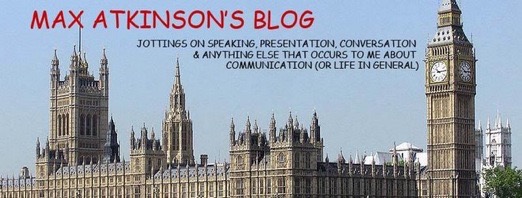It's based on the very simple principle that, if you say something that gets the audience wondering what's coming next, they'll listen more attentively and, if it's a good 'solution', they'll applaud it.
Combining two rhetorical techniques
It can work even better if you use the second part of another rhetorical technique - the contrast - to set up the puzzle.
And that's what happened in this case: the first part of the contrast refers to something they all love - the red squirrel - and the second part contrasts it with something (yet to be named) that they never want to see again.
Setting it up in this way enables the audience to anticipate where it's going early enough to start clapping when she's only half-way through the puzzle - so that she has to deliver the solution against a rising tide of applause:
[A] Many of us in the Labour Party are conservationists and we all love the red squirrel.
[B] [PUZZLE] But there is one ginger rodent that we never want to see again in the Highlands:
[SOLUTION] Danny Alexander.
Or a contrast can provide the solution to a puzzle:
An alternative way of combining these rhetorical techniques is to pose a puzzle and then solve it with a contrast, as in this example from Margaret Thatcher at the start of the 1987 general election:
PUZZLE: From the Labour Party expect the iceberg manifesto.
SOLUTION:
[A] One tenth of its socialism visible.
[B] Nine tenths beneath the surface.
PUZZLE: From the Labour Party expect the iceberg manifesto.
SOLUTION:
[A] One tenth of its socialism visible.
[B] Nine tenths beneath the surface.

No comments:
Post a Comment